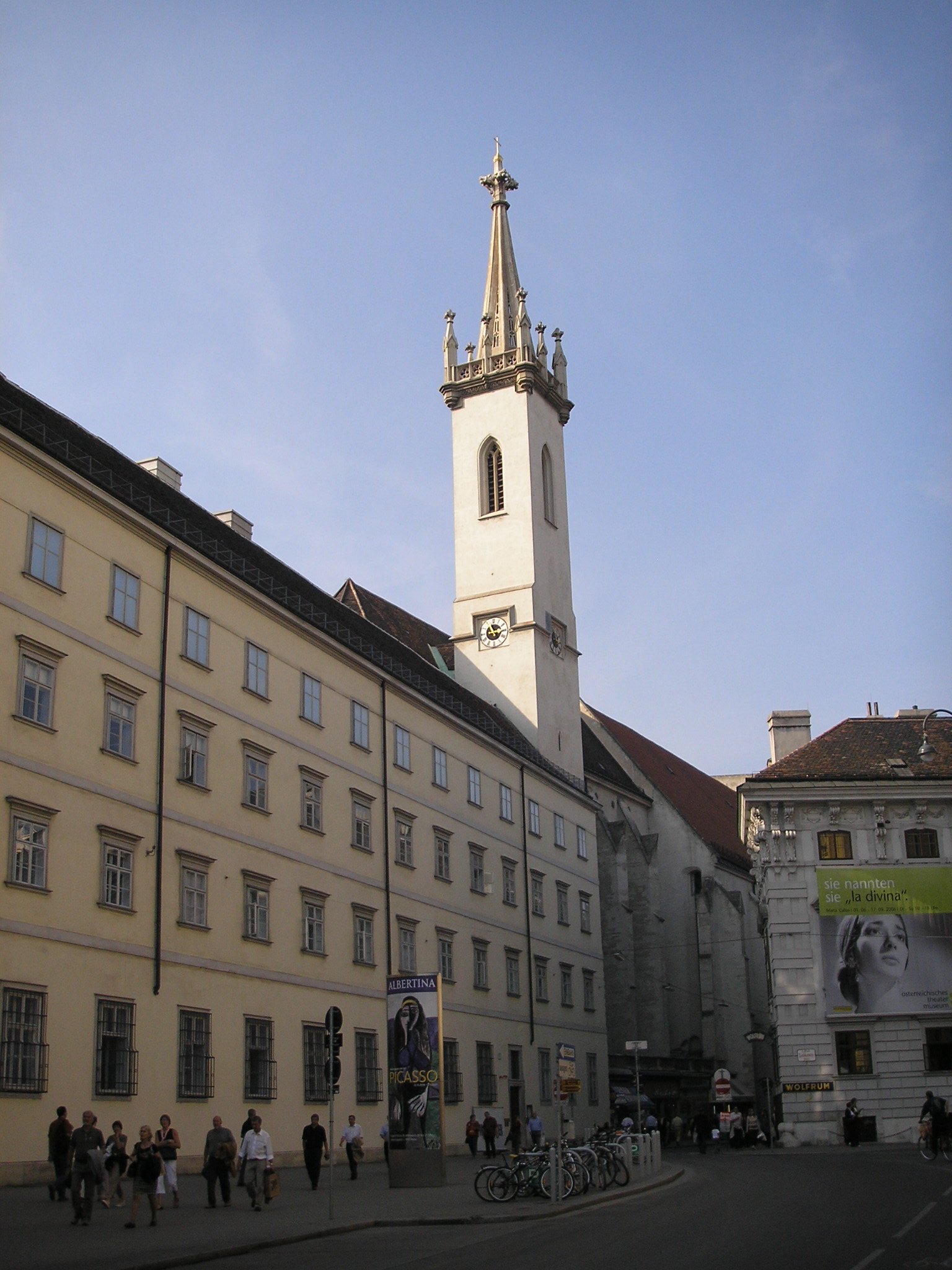- Augustinerkirche
Infobox religious building
building_name= St. Augustine's Church
caption=Augustinerkirche
location=Vienna ,Austria
geo = coord|48|12|20.6|N|16|22|2|E|display=inline|region:AT_type:landmark
religious_affiliation=Roman Catholic
rite=
province=
district=
consecration_year=1349
status=
leadership= P. Albin Scheuch, "osa"cite web|url=http://www.augustinerkirche.at|title=Official Website of Augustinerkloster]
website= [http://www.augustinerkirche.at Official Website]
architect=Dietrich Landtner
architecture_type= Churchcite web |url=http://stephanscom.at/pfarren/dekanate/Stadtdekanat_1/St._Augustin
title= Pfarre St. Augustin|accessmonthday=11-12 |accessyear=2007 |author= |date= |language=German |publisher= Erzdiözese Wien]
architecture_style= Gothic,Baroque
facade_direction=NbW
year started=1327cite web |url=http://www.augustinerkirche.at/augustinus_c.php|title=Die Augustinerkirche|accessmonthday=11-12 |accessyear=2007 |author= |date= |language=German |publisher= Augustinerkloster]
year_completed=1339cite web |url=http://www.augustinerkirche.at/augustinus_c.php|title=Die Augustinerkirche|accessmonthday=11-12 |accessyear=2007 |author= |date= |language=German |publisher= Augustinerkloster]
construction_cost=
capacity=
length= 85 mEstimated from satellite images provided byGoogle Earth ]
width= 20 m
width_nave=11 m
height_max=
dome_quantity=
dome_height_outer=
dome_height_inner=
dome_dia_outer=
dome_dia_inner=
materials=The St. Augustine's Church (Augustinerkirche in German) is a parish church located on Josefsplatz, next to theHofburg , the winter palace of theHabsburg dynasty inVienna . Originally built in the 14th century as the parish church of the imperial court of theHabsburg s, the harmonious Gothic interior was added in the 18th century. Its official name is "St. Augustine's Church." although the Viennese always called it "The Augustinian's Church".History
In
1327 , Duke Frederick "the Handsome" ("Friedrich der Schöne") founded this church with acloister for theAugustinian friars .In
1634 , the Augustinerkirche became the parish church of the imperial church. As imperial church, manyHabsburg weddings took place there, including the wedding of Archduchess (and future Empress) Maria Theresa in1736 to Duke Francis of Lorraine, the wedding of Archduchess Marie Louise in1810 to Emperor Napoleon Bonaparte of France, and the wedding of Emperor Franz Joseph in1854 to Duchess Elisabeth in Bavaria.A functioning monastery of six black-robed Augustinian monks remains, serving the needs of the parish.
Interior
The
nave was built under architectDietrich Landtner from 1330 to 1339, but notconsecrate d until1 November 1349 . As the nearby Hofburg expanded, the Augustinerkirche gradually became engulfed by it and today is a part of the complex. Although inconspicuous from the outside, the inside is more ornate. During the reign of Emperor Joseph II, 18 side altars were removed in1784 when the church was restored in the gothic style. A new side altar was added in2004 , dedicated to EmperorKarl I of Austria (1887 - 1922) who is on the path to being recognized as asaint by theRoman Catholic Church .Chapels
The Loreto Chapel, to the right of the main altar, holds the silver urns containing the hearts of
Habsburg rulers, while their bodies are kept in the Imperial Crypt. Herzgruft contains the hearts of 54 members of the imperial family.cite web |url=http://www.augustinerkirche.at/augustinus_herzgruft.php|title=Die Herzgruft in der Loretokapelle|accessmonthday=11-12 |accessyear=2007 |author= |date= |language=German |publisher= Augustinerkloster]Tomb of Maria Christina
Notable among the church's monuments is the memorial to
Marie Christine of Austria sculpted byAntonio Canova , in 1805.Sacred music
Composer
Franz Schubert conducted the Mass he composed in F there, andAnton Bruckner ’s Mass in F minor had its world premiere in the church.In the 21st century, the church is known to host high quality sacred music concerts, particularly for its weekly Sunday High mass with full orchestra and choir. The church also has two organs.Notes
External links
*
*cite web |url=http://www.augustinerkirche.at/augustinus_herzgruft.php|title=Die Herzgruft in der Loretokapelle|accessmonthday=11-12 |accessyear=2007 |author= |date= |language=German |publisher= Augustinerkloster
* [http://www.augustiner.at/kirchenmusik/ Official website]
Wikimedia Foundation. 2010.
